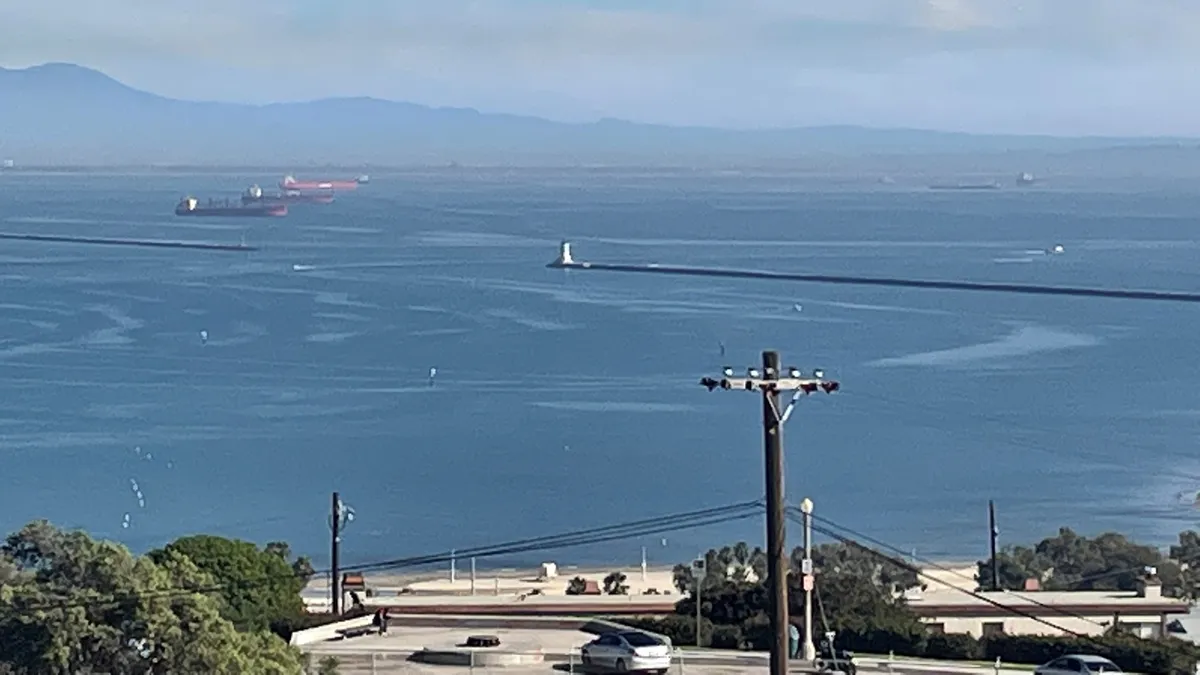An industry working group declared the ship backlog at the Port of Los Angeles and the Port of Long Beach has ended after 25 months, according to a Nov. 22 email from the Marine Exchange of Southern California.
The decision to declare the backlog over was made by the marine exchange in conjunction with the Ports of Los Angeles and Long Beach, the Pacific Maritime Association (PMA), and the Pacific Merchant Shipping Association (PMSA), Marine Exchange Captain and Executive Director Kip Louttit said in the email.
Louttit said in the email that two factors in particular led to the end of the backlog: an “ample” availability of labor to discharge and load cargo from container ships and the choice of some ocean carriers to arrive after their estimated time of arrival to optimize their vessel operations.
Demand at the ports has also dropped significantly. Ongoing labor negotiations from the West Coast ports has led shippers to lean into less risky alternatives by moving cargo to the East or Gulf Coast. Both the Port of Los Angeles and the Port of Long Beach reported lower cargo volumes in October compared to the same time last year.
The backlog, which began in October 2020, was due in part to heavy congestion as demand outweighed capacity. Southern California ports were met with record volumes for months, eventually persuading port officials to extend hours of operations.
In response, the Marine Exchange created voluntary guidelines in a bid to try and reduce the number of vessels crowding the San Pedro Bay Ports, which went into effect on Nov. 15, 2021. The queuing system asked ships headed to either port to loiter further away until 72 hours prior to their berthing assignment.
The guidelines did not solve the backlog, but did help move the queued container ships 50-150 miles offshore, guide the labor allocation process and improve safety and air quality. The queuing system, operated by Pacific Maritime Management Services, remains in effect, Louttit added.
"The new system worked superbly for the past 53 weeks to guide the labor allocation process, improve safety, and improve air quality,” he said in the email. “We went from 86 container ships anchored or loitering/drifting in our waters [on] 16 Nov 2021 [and] first went to zero loitering on 3 February 2022 and remained at low levels subsequently."















